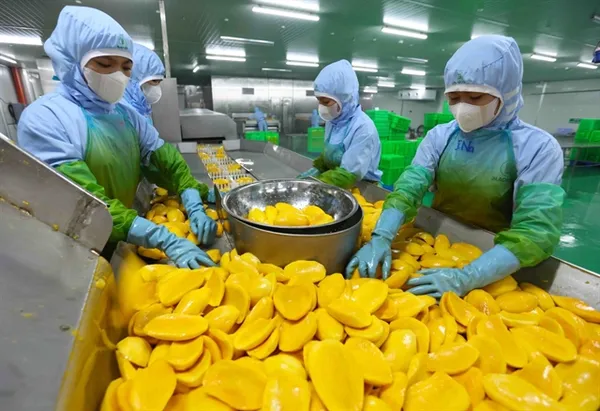 Economy
Economy

The State Bank of Vietnam (SBV) buying net US$4 billion in January may be the way to lower Vietnamese đồng lending rates.
 |
| The State Bank of Vietnam (SBV) buying net US$4 billion in January may be the way to lower Vietnamese đồng lending rates.— Photo cafef.vn |
HÀ NỘI — The State Bank of Vietnam (SBV) buying net US$4 billion in January may be the way to lower Vietnamese đồng lending rates.
The data was announced at the Government’s monthly meeting on Thursday.
To achieve such a result, the central bank in late November 2018 sold greenback futures that would be delivered in late January 2019 to raise the market supply of dollars, vneconomy.vn reported on Friday.
Then on the first working day of 2019 (January 2), the central bank for the first time in a year raised its purchasing rate by VNĐ500 to VNĐ23,200 for a dollar from the last-day rate of 2018.
As of December 31, 2018, the purchasing rate for a US dollar set by the SBV was VNĐ22,700. The rate was cut by VNĐ10 on February 8, 2018.
In addition to the two technical measures, the central bank also increased the gap between Vietnamese đồng and dollar interest rates on the interbank market, making Vietnamese đồng more attractive for savings and thus balance the foreign exchange rate with the dollar.
After a month, the central bank was able to lure a huge amount of US dollars for its reserves, proving the supply of foreign currency in Viet Nam had been great and consolidating and helping transform a part of foreign currency held in the economy in recent years.
But SBV may not stop buying dollars from the market, not only to increase its foreign reserves but also to lower the đồng lending rates.
Buying $4 billion means SBV had to inject a huge amount of Vietnamese đồng into the market, which would help balance the market demand-supply during the Tet period – the peak season for making payments – and create additional supply of cash for lenders – who accepted mortgages from borrowers.
Local commercial banks have recently cut their đồng-based lending rates. For example, the Joint Stock Commercial Bank for Foreign Trade of Vietnam (Vietcombank) on January 9 cut its lending rate for short-term loans by 0.5 per cent to 6 per cent.
Vietnamese đồng-based interest rates have been kept more attractive than the dollar-based ones, raising expectations that cash would flow back into commercial banks after the festival was over, and thus, easing the lending rates among commercial banks.
Between late 2018 and late January 2019, đồng-based interbank offered rates kept increasing to 5.19 per cent per year, twice the dollar-based offered rate on the same market.
Between commercial banks and individual and institutional clients, đồng-based offered interest rates showed signs of increasing to 8.5-8.7 per cent per annum for long-term savings.
In 2018, many central banks had to increase interest rates and depreciate domestic currencies to deal with the stronger dollar and the outflow of foreign capital.
During last year, the global markets became used to the Federal Reserve’s rate increase plan as it reflected the “hawkish view” of Fed officials, strengthened the dollar against other currencies and resulted in the outflow of foreign capital from emerging markets.
On January 30, the Fed signalled it may stop raising rates and global analysts saw that could be the end of the rate hike plan. And it may even mean the Fed would cut rates if needed. — VNS




